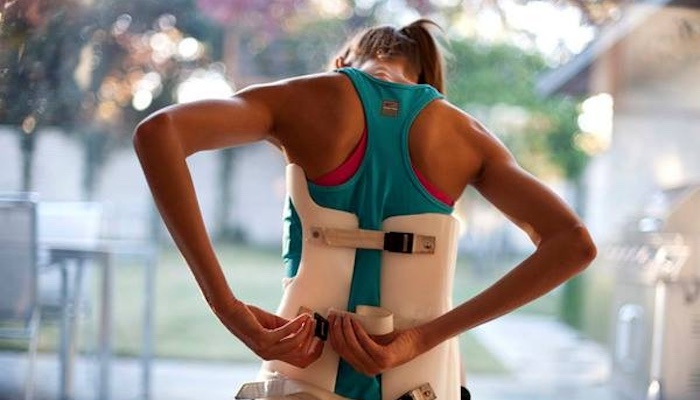
Several rigid back braces are available today for scoliosis treatment, each differing in how they apply pressure to the spine and ribs to prevent curve progression. Some braces require full-time wear (16 to 23 hours a day), while others are only worn at night for 8 to 10 hours during sleep.
Full-Time Braces
Some of the most common full-time scoliosis braces include:
Boston Brace
The Boston brace is the most commonly prescribed brace for scoliosis. It is a type of thoracic-lumbar-sacral orthosis (TLSO). Variations, such as a CTLSO (which includes a neck extension), exist for higher thoracic curves, though they are less common. The Boston brace is usually made from prefabricated molds. The orthodontist selects the best mold for the patient’s size and curve type, then adds corrective pads and cutouts customized for the patient’s scoliosis. The brace applies pressure on the curve's convex (outer) side and provides relief on the concave (inner) side, guiding the spine in the correct direction. The brace opens in the back, so patients may need assistance putting it on.
Wilmington Brace
Another popular TLSO is the Wilmington brace. Unlike the Boston brace, the Wilmington brace is custom-fitted based on a cast taken while the patient lies flat. Corrective forces are then built into the brace. It fits like a snug jacket, making it a full-contact TLSO without gaps or open spots.
Milwaukee Brace
The Milwaukee brace, an older design developed in the 1940s, is the original cervico-thoracic-lumbar-sacral orthosis (CTLSO). Although less common today due to bulkiness and the effectiveness of newer braces, it may still be used for curves higher in the thoracic or cervical spine. The Wilmington and Boston braces are effective for curves at or below the T8 vertebra (mid-back to the lower shoulder blade). The choice between them often depends on the clinic’s experience with one over the other.
Nighttime Braces
The two most commonly used nighttime braces in the U.S. are:
Charleston Bending Brace
The Charleston bending brace is the most frequently prescribed nighttime brace. It is custom-fitted using a torso cast and designed based on X-ray measurements. This brace is only intended for wear while lying down, allowing it to apply stronger forces without maintaining head-pelvis alignment. It pushes the curve closer to the midline while holding the spine in an overcorrected position. This extreme position is achievable while lying down, even though it would be impractical during daytime activities.
Providence Brace
Like the Charleston brace, the Providence brace applies hypercorrective force while the patient is asleep. However, instead of bending the spine in the opposite direction, it elevates one shoulder and applies lateral and rotational forces directly to the curve (or both curves in cases of a double curve). In some cases, it can push the curve beyond the midline.
The choice between these braces often depends on physician preference and experience.
Choosing Full-Time vs. Nighttime Bracing
Both full-time and nighttime braces are proven effective for scoliosis treatment, but there is no definitive answer on which is better. Some studies suggest that the longer a brace is worn, the better the chance of stopping curve progression. However, other research indicates that nighttime bracing may be more effective due to better patient compliance.
In general, doctors tend to recommend full-time bracing for curves over 35 degrees or for double curves. For single curves under 35 degrees, nighttime bracing could be an option, especially if the patient prefers it.
Precision Pain Care and Rehabilitation has two convenient locations in Richmond Hill – Queens, and New Hyde Park – Long Island. Call the Queens office at (718) 215-1888 or (516) 419-4480 for the Long Island office to arrange an appointment with our Interventional Pain Management Specialists, Dr. Jeffrey Chacko or Dr. Sonny Ahluwalia.















